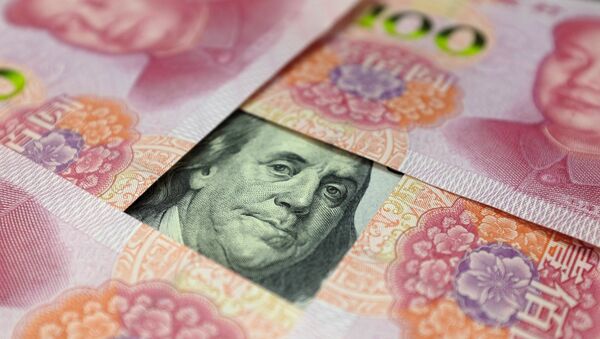Addressing the Russian Parliament following his inauguration, Vladimir Putin called for the “unburdening” Russia’s economy from the dangerous monopoly of the US dollar in the pricing of oil in global commodities markets. He indicated that the underlying reasons were security-related.
“We used to behave naïvely, but now we see that the WTO [the World Trade organization] rules are all too often broken, the restrictions are imposed for political reasons, which they call sanctions. Plus more and more of them are imposed to secure its favorite competitive advantages,” Putin said.
He stated that the new "restrictions," breaking the world trade principles, make the world see that monopoly of the US dollar is dangerous for many regions. According to him, de-dollarization should be promoted on principle, in order to preserve the country’s sovereignty. Putin didn’t name an alternative currency in his speech.
Chinese Wall to Petrodollar
Putin’s recent announcement came less than two months after China launched yuan-denominated oil futures on the Shanghai International Energy Exchange, thus challenging the dominance of the Brent and West Texas Intermediate (WTI) benchmarks. Incidentally, in 2017 China emerged as the largest oil buyer, surpassing the United States. According to the US Energy Information Administration (EIA), in 2017 China imported 8.4 million barrels of crude per day, half a million more than the US.
Russia is ready to support the Chinese contracts, as Sputnik contributor Igor Naumov wrote, citing a source close to the top management of the Saint-Petersburg Stock Exchange (SPBEX).
"Currently, the US dollar is used as the contract currency in the global hydrocarbon trading system, as well as for other commodities," the journalist explained. "This is what largely provides the dollar with its status as the world's leading reserve currency. [However], the yuan is seeking to dislodge the American [petrodollar] from one of the fastest growing oil markets in the world."
READ MORE: De-Dollarization: How Russia and China May Soon Dethrone the Petrodollar
Amid US-led sanctions, Russian energy ties with China have deepened over the last several years, which has resulted in the country’s becoming China's biggest crude supplier, displacing Saudi Arabia and Angola. On January 1, 2018, a second pipeline for importing Russia's East Siberia-Pacific Ocean Crude began to pump oil, which doubled China’s import capacity to 30 million metric tons annually, according to China's state-run Xinhua News Agency. The first pipeline supplying crude from Russia directly to its eastern neighbor began operations in 2011.
At the same time, in December 2017, the Russian Finance Ministry announced plans to place an issue of yuan-denominated bonds worth $1 billion on the Russian domestic market in 2018. Prior to this move, President Vladimir Putin endorsed the idea of creating a yuan-denominated investment fund; the idea had been proposed by the Russian Direct Investment Fund (RDIF) and China Development Bank. In July 2017, the organizations agreed to establish a joint 68-billion-yuan (some $10 billion) fund to contribute to direct investments, including within the framework of the China's "One Belt, One Road" strategy.
Separately, Russia and China are considering possibilities for cooperation on the issue of national payment systems, specifically, linking Russia's MIR payment system with China's Union Pay, as Prime Minister Dmitry Medvedev stated.
De-Dollarization Amid Sanctions
The de-dollarization issue took on new significance during the peak of Russia's currency crisis the end of 2014 and in early 2015, when the Russian ruble collapsed. The nation faced a sharp outflow of capital as international sanctions were imposed after the country reunited with Crimea.
The debate about the necessity to reduce Russia's dependence on US payment systems intensified after US President Trump introduced a new volley of anti-Russian sanctions in August 2017. This gave new momentum to Russian de-dollarization, as Russian banks continued to reduce the volume of dollar-denominated transactions with foreign creditors, while the non-financial sector continued to replace foreign currency obligations with those denominated in rubles.
"There is a big trend toward the de-dollarization of the Russian economy. The Central Bank made some very important steps so that fewer foreign currency loans were issued," then-Russian Minister of Economic Development Maxim Oreshkin said back in 2017.


